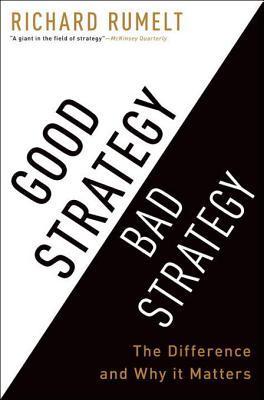In my latest reading journey, I revisited a cornerstone of strategic thinking, “Good Strategy Bad Strategy” by Richard Rumelt. This masterpiece, which I’ve always held in high regard for its insightful analysis and practical advice, struck a new chord with me, illuminating facets of strategy with even greater clarity. My return to Rumelt’s wisdom was serendipitously timed with Lenny Rachitsky‘s latest podcast episode, where he engages in a thought-provoking conversation with Rumelt himself, diving deep into what makes a strategy truly effective. I highly recommend listening to this enriching discussion, which is available here.
The Essence of Good Strategy
Rumelt’s delineation of a good strategy as a coherent blend of policies, actions, and resources uniquely designed to tackle fundamental challenges is more relevant today than ever. The “kernel” of a good strategy, composed of diagnosis, guiding policy, and coherent actions, is a robust framework for leaders at all levels. Reflecting on my experiences, I’ve not witnessed often the transformative power of a well-crafted strategy. It’s not merely about the resources at one’s disposal but how effectively they are aligned and mobilized to overcome obstacles and seize opportunities.
The Pitfalls of Bad Strategy
Rumelt’s identification of bad strategy through its hallmarks – fluff, failure to face the challenge, mistaking goals for strategy, and bad strategic objectives – offers a critical lens for evaluating our strategic approaches. As a leadership coach and organizational consultant, I’ve encountered these pitfalls and worked alongside teams to avoid them, emphasizing the importance of clarity, realism, and actionable objectives. Regrettably, I have experienced organizations stumbling into some, if not all, of these pitfalls firsthand.
“Good Strategy Bad Strategy” remains a seminal work for anyone serious about understanding and applying strategic principles in today’s dynamic world. My recent rereading, coupled with the enlightening conversation between Rumelt and Lenny, has reinforced my conviction in the power of strategic thinking to shape successful, resilient organizations and leaders. As we navigate the complexities of leadership and organizational growth, let us lean on these insights to craft strategies that are not only effective but truly transformative.

